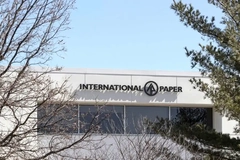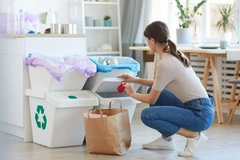Recycling revelations: Study calls for “super cleaning” investment amid rPET bottle contamination concerns

21 Mar 2022 --- Beverage bottles produced from recycled PET (rPET) can contain higher concentrations of potentially harmful chemicals than bottles made from virgin PET. These findings originate from a Brunel University London, UK, study, which suggests that the recycling process may be contaminating bottled drinks.
Specifically, the study identified 150 chemicals that had leached into drinks from their recycled plastic bottles, with 18 of those chemicals found in levels exceeding health regulations.
Dr. Eleni Iacovidou, a lecturer from Brunel’s Centre for Pollution Research and Policy, who led the study, tells PackagingInsights: “Chemicals such as antimony and endocrine-disrupting compounds can cause adverse health impacts, including cancer, due to their cumulative effect.”
“We found these chemicals can come from various sources, such as the catalysts and additives used during production and degradation during PET production, and degradation that can happen across a bottle’s lifecycle,” she adds.
The researchers point to several factors that can result in food contact chemicals (FCCs) being present in bottled drinks, including the bottle production and the conditions under which bottles are filled, stored, distributed, and shelved, for example, exposure to high levels of sunlight or humidity.
So-called FCCs are commonly found in packaged food and drink, with most considered safe in low concentrations.
The image shows the proportional distribution of intentionally and non-intentionally added substances that have been detected to migrate from PET drink bottles across their lifecycle (Image Credit: Dr. Iacovidou).Super cleaning solutions
The study authors recommend a technology known as “super cleaning” to reduce the number of chemicals found in bottled drinks. Super cleaning uses a three-stage process to clean old plastics before recycling – a high-temperature wash, a gas wash and a chemical wash.
“The technology is well developed and commercially available,” says Dr. Iacovidou.
Moreover, the scientist explains recycling processes already include bottle cleaning as standard, meaning super cleaning can be easily integrated.
“By investing in new super-cleaning technologies, we can maximize the likelihood of decontaminating rPET to levels similar to virgin PET,” she adds.
Consumer support needed
Meanwhile, Dr. Iacovidou says consumers can help improve the quality of rPET by making use of the deposit return schemes increasingly available at many supermarkets and other public places, like stations and beaches, to drive up PET bottle collection.
Additionally, Dr. Iacovidou stresses that consumers need to become better informed about the types of plastics accepted in their local waste streams to avoid “aspirational recycling.”
“This behavior can prevent contamination, but really what consumers need to do is try to prevent the use of PET bottles in our households by showing a preference for other solutions.”
Design for recycling
The researchers also suggest that recyclers need to improve how they collect, sort and reprocess PET bottles. Furthermore, bottle manufacturers should prioritize “design for recycling” to improve the quality of recycled material.
Dr. Iacovidou says design for recycling combined with good monitoring of the storage conditions throughout the drink bottles lifecycle (making sure the drinks are not exposed to high temperatures and UV radiation), and improvements at the disposal and reprocessing stages, can ensure recycled PET bottles to not pose risks to human health.
“Therefore, to continue using plastic, which is indeed a useful material and offers many benefits in our society, we must make improvements at all stages. This [benefit] is why we are calling on the importance of increasing the transparency and collaboration among all stakeholders involved at all stages of the value chain,” she asserts.
 Dr. Iacovidou says consumers can support PET bottle recycling by using increasingly available deposit return schemes.Avoiding plastic all together
Dr. Iacovidou says consumers can support PET bottle recycling by using increasingly available deposit return schemes.Avoiding plastic all together
However, Dr. Iacovidou maintains the “ultimate solution” to the rPET contamination issue is to stop using the material where possible.
“We all have a responsibility to bear. We need to start thinking about how to prevent the use of PET bottles in our households by investing, for example, in water filters, or large water containers and learning how to dispose of our plastic waste properly.
“If we reduce our consumption of PET then we will drive change further up the system. Less demand equals less production in the first place.”
“Most importantly, greater transparency and improved communication in the entire production, consumption, and management system are needed for creating a functional economy where wasted resources find their way back into the system with the least trade-offs, especially those relevant to health and safety,” she concludes.
Last week, Australia announced its largest PET recycling plant is now operational and expected to substantially reduce the country’s plastic waste by recycling the equivalent of approximately one billion PET beverage bottles each year.
Also, Alpla Group will increase its annual recycling volume in Germany to 75,000 tons of PET bottles after agreeing to acquire recycling company Texplast.
By Natalie Schwertheim











